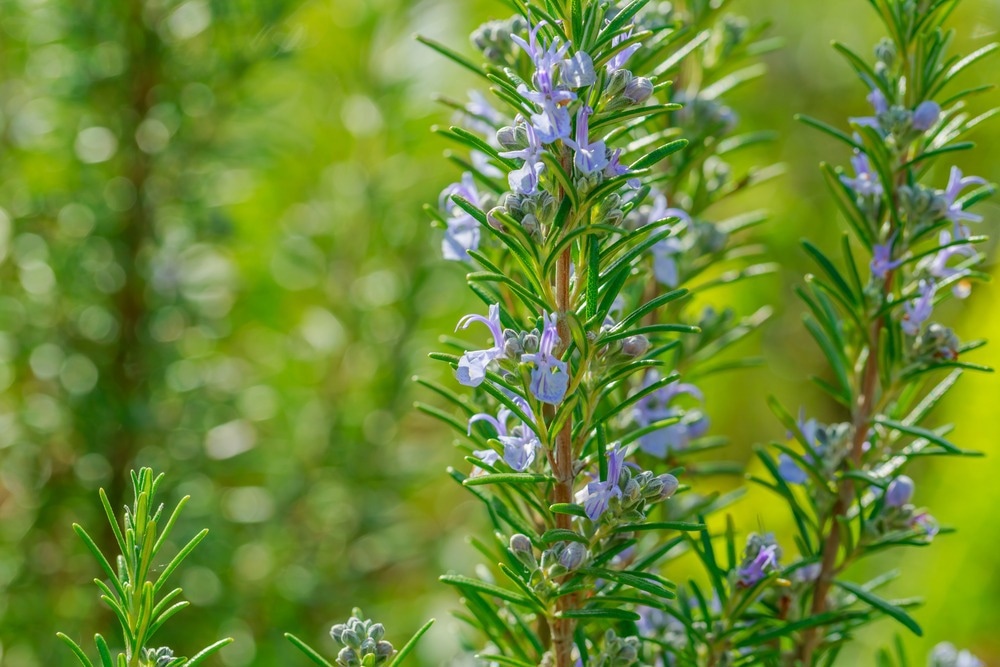Nanoparticles are particularly influential in nanotechnology due to their multifunctional features and facile preparation via environment-friendly and cost-effective methods.

Study: Bioengineering of CuO porous (nano)particles: role of surface amination in biological, antibacterial, and photocatalytic activity.Image Credit: nnattalli/Shutterstock.com
An article published in the journal Scientific Reports presented an eco-friendly approach to the synthesis of aminated copper oxide (CuO) nanoparticles from the leaf extract of Rosmarinus officinalis. The as-prepared nanoparticles exhibited promising biological and photocatalytic activities.
The biosynthesized CuO nanoparticles were evaluated for their biological activity against Gram-positive (Bacillus cereus) and Gram-negative (Pseudomonas aeruginosa) bacteria and screened by (3-(4,5-dimethylthiazol-2-yl)-2,5-diphenyltetrazolium bromide) tetrazolium (MTT) assay by applying HEK-293 cell lines. The results revealed lower cytotoxicity and higher antibacterial activity of the CuO nanoparticles with improved zeta potential value.
The photocatalytic activity of CuO nanoparticles revealed that the dye degradation process attained 97% efficiency in 80 minutes under light, while the dye degradation in dark conditions was only 7% in 80 minutes. Thus, the nanoparticles biosynthesized from Rosmarinus officinalis leaf extract showed significant stability in green reaction media and outstanding biological activity.
CuO Nanoparticles and Their Applications
CuO nanoparticles are widely used in the field of catalysis, superconductors, and ceramics. These nanoparticles are used as catalyst and catalyst support, as well as electrode active materials, and show superior activity compared to the bulk material. Compared with ordinary copper oxide bulk material, the CuO nanoparticles have peculiar physical and chemical properties, including surface effect, the superiority of the quantum size effect, volume effect, and many more.
Plant-derived nanomedicines are green alternatives to those obtained via conventional synthesis. Using plants as natural and renewable resources is an ideal approach for the fabrication of CuO nanoparticles, bringing value and paving the way for biomedical applications. This green approach towards nanoparticles substantially reduces toxicity due to reagents.
Thus, the biological method is an environmentally friendly approach to obtaining the cost-effective synthesis of nanoparticles, extensively used in applications, including gene therapy, nanobiotechnology, drug delivery, pharmacology, medicine, and biomedical engineering.
Recently, CuO nanoparticles were reported for their antibacterial activity with high toxicity against a plethora of human or plant bacterial pathogens due to their chemical and biological reactivity, high surface area, biocompatibility, and small size. The aminated CuO nanoparticles can easily encounter bacterium cells with the help of carboxylic groups on the cell membrane, facilitating an easy entry of nanoparticles into the bacterial cell.
The CuO nanoparticles, once inside the bacterial cell, generate reactive oxygen species (ROS) that rupture the membrane and interfere with cell division, DNA replication, and metabolism. Additionally, the ribosome and mitochondria get degraded by CuO nanoparticles-mediated cytotoxicity.
Biological, Antibacterial, And Photocatalytic Activities of Aminated CuO Nanoparticles
Previously, leaf extracts of Gloriosa superba and Sida acuta were used to fabricate the CuO nanoparticles that showed antibacterial activity against Gram-positive and Gram-negative bacteria.
In the present study, CuO nanoparticles were synthesized utilizing the Rosmarinus officinalis leaf extract and characterized for their structural and biological properties. In addition to their cytotoxicity and antibacterial activity, the photocatalytic activity of the aminated CuO nanoparticles was evaluated from degradation studies of methylene blue (MB).
The results from the MTT test revealed that the aminated CuO nanoparticles showed higher cell viability and lower cytotoxicity. These nanoparticles were active against Gram-positive (Bacillus cereus) and Gram-negative (Pseudomonas aeruginosa) bacteria. Moreover, the dye degradation of MB in the presence of synthesized aminated CuO nanoparticles occurred after 80 minutes with 97 % degradation under the light.
Conclusion
To summarize, the present study aimed to biosynthesize the aminated CuO nanoparticles from leaf extract of Rosmarinus officinalis and to evaluate their potential photocatalytic and biological activity. The as-prepared aminated CuO nanoparticles showed photocatalytic activity on MB dye, degrading approximately 97% of dye under the light in 80 minutes, while in the dark only 7% of MB dye was degraded in 80 minutes.
Furthermore, the biosynthesized aminated CuO nanoparticles exhibited antibacterial activity against Pseudomonas as a gram-negative and Bacillus as a gram-positive bacterium. Herein, the aminated CuO nanoparticles showed 50% enhanced antibacterial activity compared to plain CuO nanoparticles.
Aminating the CuO nanoparticles increased the zeta potential of the prepared nanoparticles. The MTT assay of biosynthesized aminated CuO nanoparticles against HEK-293 cell lines revealed that the proposed modification had low cytotoxicity.
The stability of fabricated nanoparticles in green media and based on excellent results in in vitro studies along with the remarkable results of biological activity revealed the attractive features of aminated CuO nanoparticles biosynthesized from Rosmarinus officinalis leaf extract.
Reference
Bagherzadeh, M. et al. (2022) Bioengineering of CuO porous (nano)particles: role of surface amination in biological, antibacterial, and photocatalytic activity. Scientific Reports. https://www.nature.com/articles/s41598-022-19553-2
Disclaimer: The views expressed here are those of the author expressed in their private capacity and do not necessarily represent the views of AZoM.com Limited T/A AZoNetwork the owner and operator of this website. This disclaimer forms part of the Terms and conditions of use of this website.